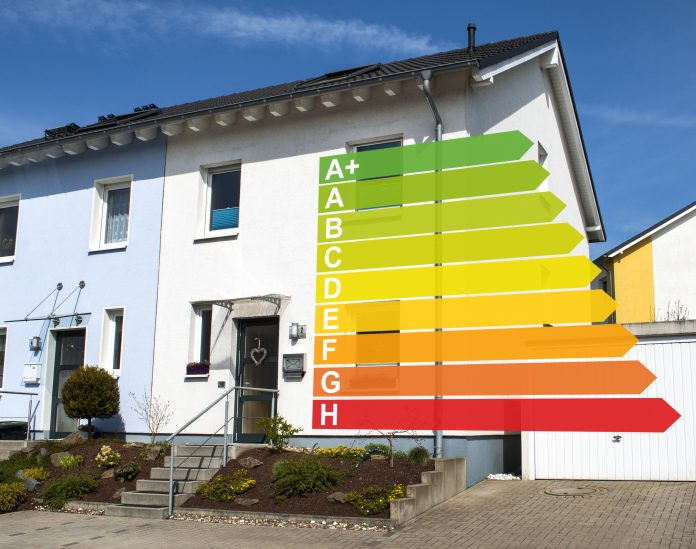David McEwan, UK consultancy director, at IES, explores why the building energy performance gap exists and how we can go about closing it
The performance gap is a well-known issue within the built environment industry but one that will continue to hinder efforts to reach net zero if not addressed. Studies have highlighted the true extent of the performance gap, showing that the energy consumption of a building once in use can be five to 10 times higher than calculations made at the design stage.
At a time when energy prices are increasing and the countdown to net zero targets is well underway, we cannot afford to keep creating buildings that underperform when it comes to energy efficiency. With the built environment accounting for 39% of energy-related carbon dioxide (CO2) emissions, we must move toward bridging the performance gap.
Better communication between project stakeholders including building users, architects and designers right from the early design stages, through to those managing buildings once they are in operation, is key to closing the performance gap. To facilitate this collaboration and to better predict energy performance, it is essential to make use of the technology available to inform decisions made right across the building’s lifecycle.
Why does the performance gap exist?
There has long been a design for compliance culture in the UK, but awareness of the increasing need to shift towards designing for performance is growing. With the looming threat of climate change upon us, it’s simply not an option to avoid making this move towards designing for performance. The industry must seek to go beyond compliance in order to collaborate in order to achieve targets and put sustainability at the heart of the building project.
It is the responsibility of all those involved to facilitate this shift, not just the job of those designing the buildings. Clients need to be investing in good quality design, which is based on evidence derived from high quality. Professional appointments and fees are frequently based on previous projects, which often means recycling out of date project hierarchies and repeating the same design mistakes. Significant energy in use reductions can only be delivered where the whole project team work closely to meet targets at each project stage.
Another reason for the existence of the performance gap is that energy calculations are often based on simple steady-state calculations more suited to a bygone age, as opposed to the granular approach required to meet today’s challenging demands for very low energy buildings.
Furthermore, when operational energy calculations are made, unregulated sources of energy consumption, such as plug loads, external lighting, or sever rooms are either not included or inaccurately presented in the predictions. This has frequently resulted in a significant amount of energy not being factored into predictions and a disparity once all of these sources are operational.
At the construction stage, errors or alterations that stray from the design plan can also influence the energy performance. There is often insufficient communication between the designers and the construction team, meaning that post-design stage changes may not be fed back to the designers. Additionally, the tendency in recent years to design for compliance increases the chances of unquantified errors as it tends not to consider the individual needs of each building. As a result of a lack of confidence in calculation results, designers often add unnecessary design margins which in turn can lead to plant and related equipment being significantly oversized, again creating further operational inefficiencies.
So, we know the reasons why there is a performance gap, but how do we go about closing it?
Encouraging progress through energy rating systems
The introduction of NABERS UK in November 2020, a six-star rating system which measures the actual energy use of offices once in operation, marked a pivotal moment in the shift towards performance-based design. The NABERS design for performance process means that a developer or owner will commit to achieving a specific NABERS energy rating for a new office development or major refurbishment, helping to reduce the chance of a performance gap and improve operational efficiency.
At present, NABERS UK only rates office buildings and is a voluntary process, but the UK Government is planning to launch phase one of a new national energy performance-based rating system in April 2022. However, to meet the requirements of energy ratings, people need guidance on how to get there.
The Net Zero Public Sector Buildings Standard
The Scottish Futures Trust has taken steps to help public bodies meet net zero commitments and achieve energy targets by commissioning the Net Zero Public Sector Buildings Standard. The modelling guide associated with the standard is part of a move away from the modelling for compliance approach which has been commonplace in Scottish construction and aimed at giving designers the information they need to make the right decisions.
At IES we have worked closely with The Scottish Futures Trust to develop a Dynamic Simulation Modelling Guide to help people to reach the standard. This involves all project stakeholders inputting their knowledge into a building model at each RIBA stage, to enhance collaboration, verify performance predictions and negate the chance of there being a performance gap.
How can we utilise technology to meet targets?
In order for people to achieve certain energy ratings or net zero standards, they need to use advanced modelling tools from the early design stages. Using these tools ensures that all factors are taken into consideration, such as all of the base building energy loads; whole building HVAC and smaller energy users, such as external lighting; thermal gains from services; and plug loads.
Having a model of a building also makes it possible to analyse a range of “Off-Axis” scenarios, such as weather conditions or operational or occupancy changes, which could have an impact on the performance of a building. This gives the Project Teams the detailed information and data to make informed decisions, backed up by evidence, meaning that they can include the most sustainable and energy efficient design elements that also meet economic and occupational requirements.
A good quality design stage building model can also be repurposed as a digital twin once the building is in operation. Different retrofit and refurbishment options can be tested to identify where improvements can be made to enhance performance and help to close any remaining gap between energy predictions and in-operation performance. Modelling takes the guesswork out of a building project and tailors calculations to each individual building, moving away from simply meeting compliance standards towards creating buildings and cities with the lowest possible emissions.
Enhancing communication between stakeholders
For modelling processes to work efficiently, collaboration and communication from inception, through design, all the way to operation, is key. It’s also vital for the wider goal of bridging the performance gap. All stakeholders need to be aware of the energy targets for a building, which is where systems such as NABERS UK are useful for setting out a target to aim for and outlining what it needed to achieve this. The stakes are high when working towards net zero targets as clients and building operators are expecting radically lower energy consumption, which can only be achieved through the collective efforts of all involved.
As touched on previously, actions at each stage of the building lifecycle have repercussions for the next stage and the end energy performance. For ease, the same design approaches are often repeated but these could be improved based on learnings from previous projects which should be communicated from those operating and occupying the buildings. This feedback could provide valuable insight for the next project and help to identify how to avoid or rectify a performance gap going forward. Attempts to save costs, often badged as ‘value engineering’, can also increase operational energy consumption. For example, costs are often cut when it comes to energy sub-meters which are key to fine tuning and monitoring energy consumption in operation.
Overall, embracing performance modelling tools from the early design stages, right through to operation, and ensuring effective communication across all stakeholders are both key to closing the performance gap. With the most recent IPCC report serving as yet another harrowing reminder of the true impact of climate change, we must look to how we can build and modify buildings to be as energy efficient as possible and reduce the overall impact of the built environment on the planet.

















